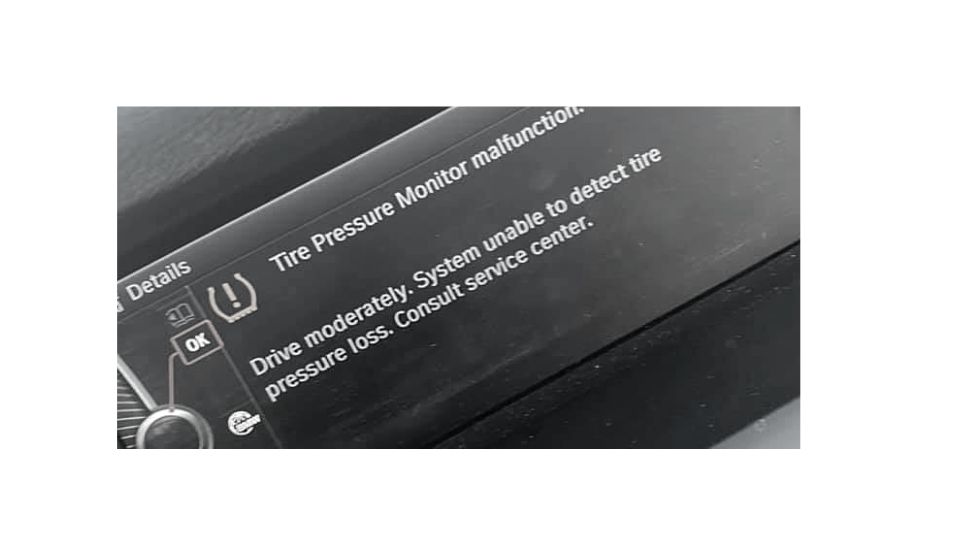In this article, we are going to look at what causes the “BMW TPM Malfunction” and things you can do in order to fix and reset the fault.
What is BMW TPMS?
The BMW Tire Pressure Monitoring System (TPMS) is a vehicle-based system that helps drivers monitor the air pressure of their tires.
This system uses sensors mounted in the valve stems and has a lifespan of six to 10 years of battery life depending on the drive cycles. Inside the wheel wells are the antenna and transponder for the sensor, which connects to a control unit that is mounted in the dash or trunk. This unit connects to the vehicle through the CAN BUS.
When a run-flat tire is deflated, a direct TPMS will alert the driver, while an indirect system, like a Flat Tire Monitor (FTM), will detect it by comparing inputs of wheel speed sensors. Resetting of sensors on all models can be performed through a button on the dash, turn signal stalk, or the iDrive interface.
How does BMW TPMS system work?
The BMW Tyre Pressure Monitoring System (TPMS) uses sensors in each wheel to detect changes in air pressure. The sensors measure the air pressure in real time and transmit the data to the vehicle’s onboard computer.
The TPMS then sends a warning signal when the pressure drops below a certain threshold, allowing drivers to take action before a flat tire occurs. The system is accessible via the iDrive system, allowing drivers to easily check their tires individually. This provides added safety and convenience for drivers, ensuring that their tires are running at optimal levels.
What Does “TPMS Malfunction” Mean on a BMW?
TPMS Malfunction on a BMW means that one or more tire pressure sensors have failed and are no longer working properly.
This usually happens when the sensors in each wheel are not detecting the correct air pressure, or when the central control unit (RDC, TPM, TPMS receiver) has malfunctioned. The tire pressure warning light will illuminate when air pressure is 20% below the recommended pressure, and a warning message will be displayed on the drive display.
What Causes BMW TPMS Malfunction?
BMW TPMS malfunctions can be caused by a variety of factors, including a dead or weak battery in the TPMS sensor, faulty or damaged TPMS antenna or wiring, or an internal electronics fault in the TPMS module. Additionally, the tires may need to be re-learned if they were recently serviced or rotated and the relearn procedure was not done correctly.
How to Fix BMW TPMS Malfunction?
First, make sure that all of your tires are properly inflated at the recommended PSI. This could be the cause of the issue, so it’s important to rule it out first.
Second, if you have already checked the tire pressure and it is still malfunctioning then it is likely a faulty sensor. In this case, you should take your car to a dealership and have them replace the sensor or reinitialize the TPMS system.
Lastly, if these steps do not fix the issue then you should schedule an appointment with a technician at the dealership to ensure that they can properly diagnose and repair the problem. With these steps, you should be able to get your BMW TPMS functioning properly again in no time.
How Much Does it Cost to Fix a BMW TPM Malfunction?
Fixing a BMW TPM malfunction usually isn’t too expensive of a repair. Depending on the type of sensor and valve stem needed, you can expect to pay around $80-$200 for the parts and labor at a reputable shop. If you need to get a preprogrammed sensor, you may end up paying a bit more, but in most cases, it is still a relatively inexpensive repair. Additionally, it is important to have your wheel rebalanced after the repair even if you don’t need to disassemble the tire from the wheel.
What type of TPMS does BMW use?
BMW uses a direct TPMS system which is attached to the back of the tire valve. This type of system uses sensors that are either banded to the wheel or mounted on the back of the valve stem.
The sensors are manufactured by VDO and Lear or Schrader and the TPMS tool needs to be held on the tire at 180 degrees to the valve stem before activation for banded sensors, and adjacent to the valve stem before activation for stemmed sensors. The direct TPMS system provides diagnostic information on the sensor, such as if there is a low battery condition on the TPMS, and is an efficient way of monitoring tire pressure in BMWs.

